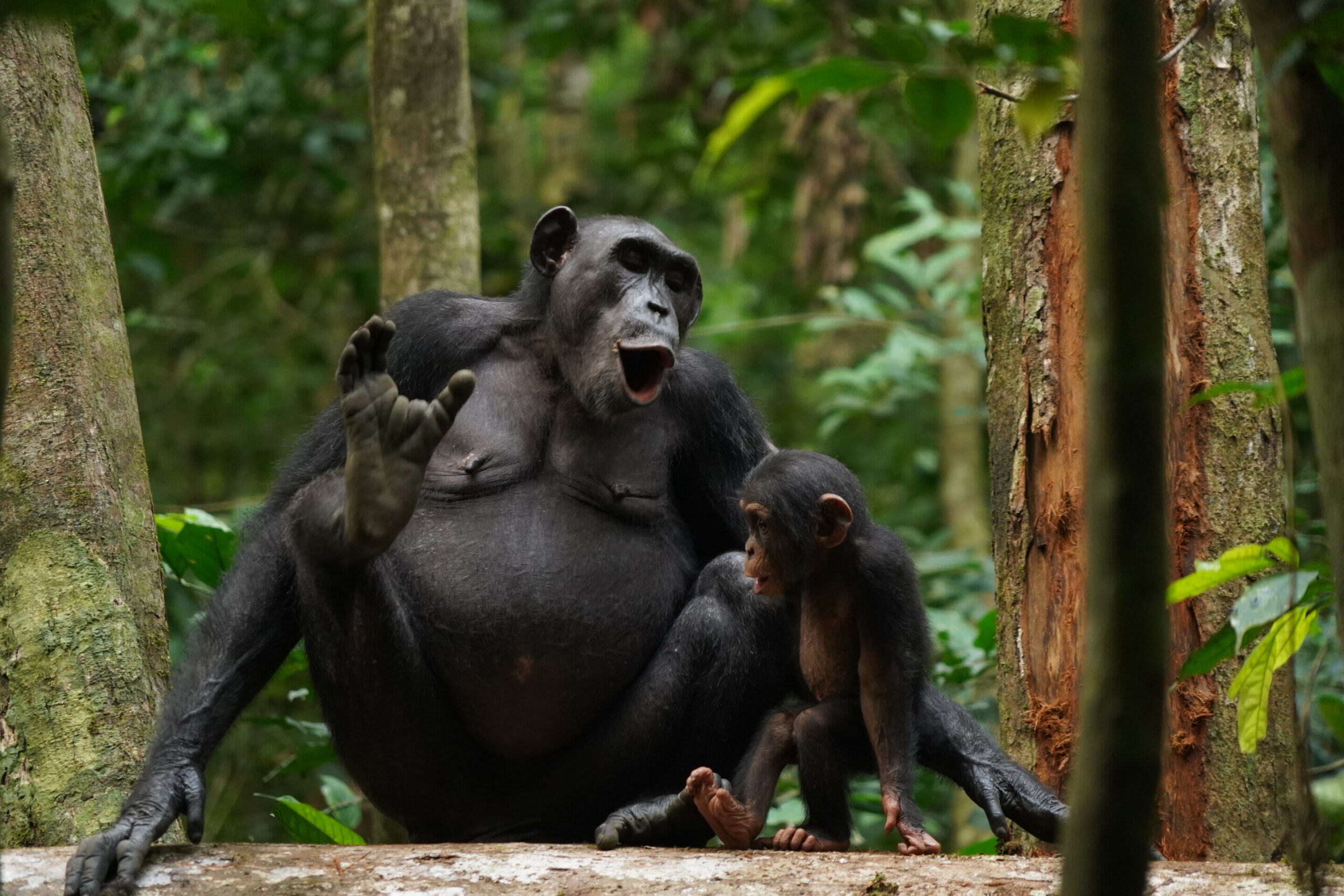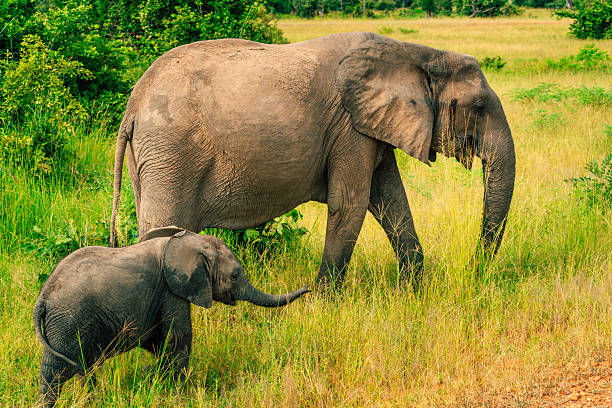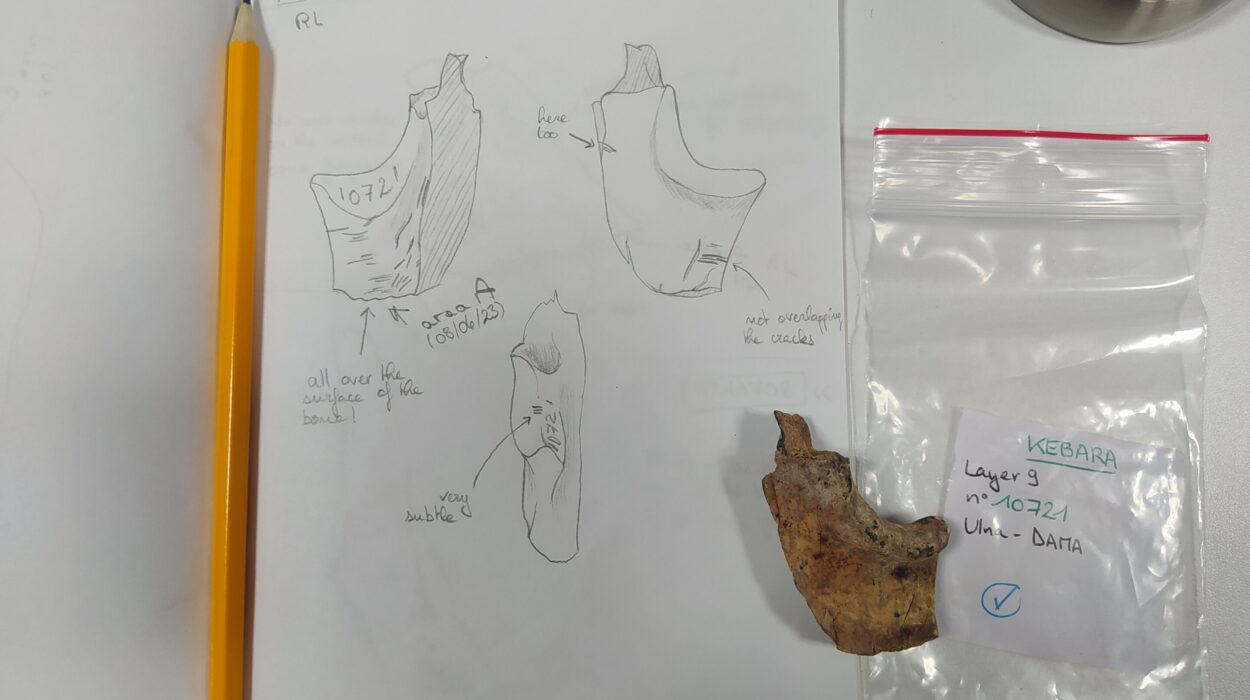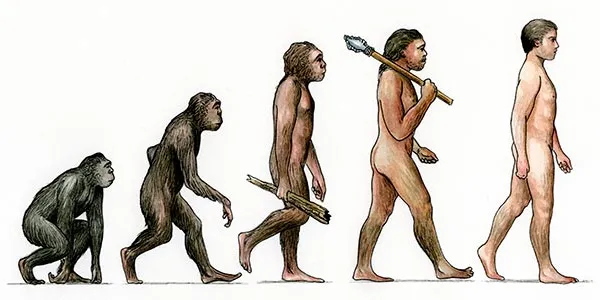Human language is one of the most extraordinary capacities ever evolved. With nothing more than coordinated sounds, the human species has constructed civilizations, charted the cosmos, composed poetry, and asked the deepest questions of existence. At its heart, language is a system of infinite expressiveness—an endlessly generative toolkit built from a limited set of sounds arranged according to rules. With syntax and semantics, humans form complex ideas from simple units: a word like “ape” can anchor entire universes of meaning, from descriptive (“big ape”) to functional (“the ape eats”) to idiomatic (“go ape”).
No other species on Earth, it seems, shares this intricate linguistic power. While many animals communicate—bees dance, whales sing, birds chirp—none use language with anything close to the sophistication of Homo sapiens. So where did this singular ability come from? Is language a miraculous leap from silence, or is it rooted in ancient calls still echoing in the throats of our primate cousins?
Language as a Puzzle of Evolution
Understanding the origin of language remains one of the deepest and most tantalizing mysteries in science. Darwin himself mused about how such a capability could have evolved, describing it as “one of the most remarkable differences between man and the lower animals.” To unlock this puzzle, researchers employ a comparative approach—scrutinizing the vocal behaviors of other primates to trace what linguistic elements may have been inherited from a common ancestor.
Chimpanzees and bonobos, humans’ closest genetic relatives, offer a tantalizing window into the pre-linguistic past. Though their vocal repertoires have long seemed limited—mostly composed of simple calls used for alarms, greetings, or food sharing—recent studies suggest a more nuanced story. Might the building blocks of human language already exist, albeit in nascent form, within the jungle choruses of chimpanzees?
The Language-Like Nature of Chimpanzee Communication
Traditionally, animal calls were seen as fixed signals—discrete, situation-specific, and emotionally driven. A predator is near? Sound an alarm. Food is found? Issue a call. But this framework assumes animal communication lacks the generative, combinatorial nature of language—the ability to piece together smaller units into ever more elaborate meanings.
Yet human language thrives on exactly this kind of flexibility. Syntax governs how word order changes meaning: “go ape” is not the same as “ape goes.” Semantics infuses combinations with sense. Even idioms—linguistic phrases like “go ape” that bear meanings far removed from their parts—reflect deep cognitive manipulation of symbols. Could any of this exist in primates?
A groundbreaking new study suggests the answer may be yes.
Into the Forest: Fieldwork in Taï National Park
In a study published in Science Advances, an international team of researchers from the Max Planck Institutes in Leipzig and neuroscience centers in Lyon undertook a massive undertaking: to decode the vocal repertoire of wild chimpanzees living in the Taï National Park, a dense and biodiverse rainforest in Côte d’Ivoire.
Over several years, scientists recorded and analyzed thousands of vocalizations from three separate groups of chimpanzees. Their mission was as ambitious as it was delicate: to determine whether chimpanzees combine calls in ways that alter or generate new meanings—stepping, perhaps, toward the flexible compositionality of human language.
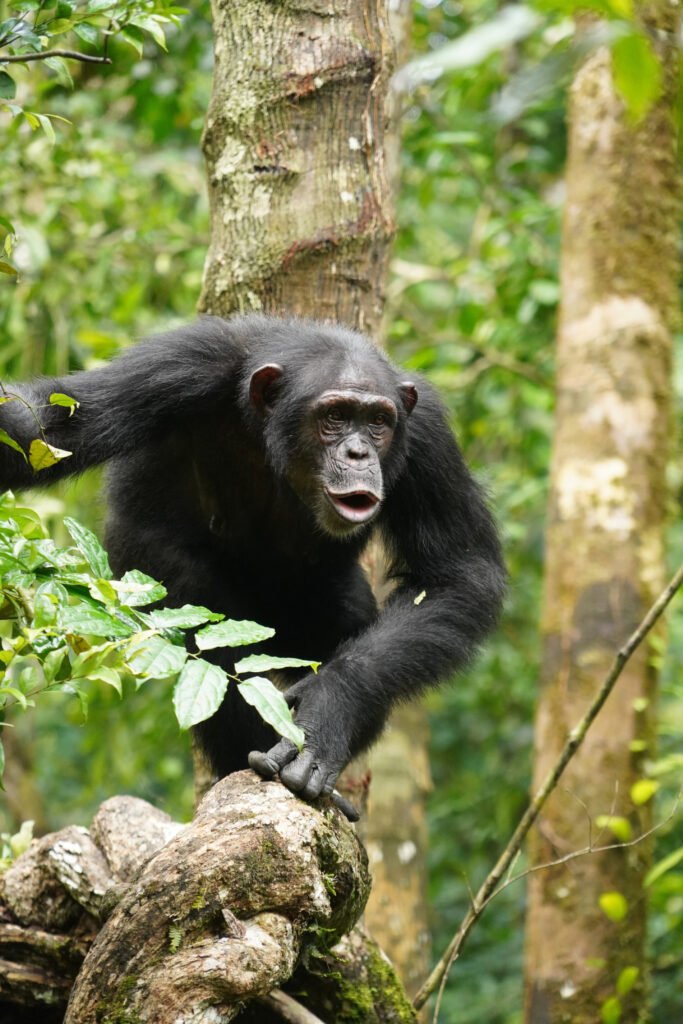
Led by Dr. Catherine Crockford and Dr. Roman Wittig, the researchers catalogued 12 distinct call types and meticulously studied how chimpanzees used them both alone and in combination. The results revealed a surprising level of complexity.
Combinations That Matter: Syntax in the Jungle
What the researchers discovered was that chimpanzees do not merely emit calls in isolation. Instead, they often combine two calls in specific sequences that change the inferred meaning of the communication.
For instance, a “hoo” call, typically used to maintain social contact, when paired with a “waa” alarm call (which might indicate danger), seemed to signal something more complex—like calling for support in a tense situation. These combinations weren’t random. They were structured, repeated across individuals, and used predictably in specific contexts.
In total, the researchers identified 390 different two-call combinations from the 12 call types—suggesting that chimpanzees may use combinations far more frequently and flexibly than previously thought. Some of these pairings were highly frequent and context-specific, suggesting a level of rule-based usage—a primitive syntax of sorts.
Just as the placement of words in a sentence like “The dog chased the cat” determines meaning, the order of chimpanzee calls appeared to influence how listeners interpreted the communication. Reversing the order changed the social dynamics or the apparent urgency of the situation.
The Significance of Compositionality
This capacity for call combination points to something scientists refer to as “compositionality”—a hallmark of human language where meaning is derived not just from individual elements, but from their structured combination. It’s what allows us to convey entirely new ideas using familiar words, to move beyond fixed expressions and express novel thoughts.
The chimpanzee data suggest that our closest relatives may possess the rudimentary beginnings of compositional syntax. While chimp call combinations are far less elaborate than human sentences, they may nonetheless represent an evolutionary precursor to the linguistic capacity that defines our species.
If confirmed, this finding would challenge long-standing assumptions that non-human primates are restricted to a “closed” system of communication, and that only humans evolved the ability to combine elements into novel expressions. Instead, the roots of this ability might stretch back millions of years, embedded deep in the primate lineage.
The Evolutionary Echo: Bridging the Linguistic Gap
These findings carry profound implications for understanding the evolution of language. Instead of viewing human language as a sudden innovation—a dramatic leap from primitive calls—it may be more accurate to see it as the flowering of cognitive seeds already present in our common ancestors with chimpanzees and bonobos.
This echoes a broader shift in evolutionary biology: the recognition that complex traits often emerge through gradual accumulation, rather than miraculous emergence. Syntax, semantics, and even the capacity for symbolic thought may not be uniquely human traits, but the refined outcome of capacities already nascent in the animal world.
Moreover, this work underscores the importance of context in vocal behavior. Just as human language is tied to intention, emotion, and social dynamics, chimpanzee calls are embedded in a web of meaning shaped by their relationships, conflicts, and alliances.
Conservation as a Scientific Imperative
The research from Taï National Park also highlights a critical reality: the deepening threats facing wild chimpanzee populations. Habitat destruction, poaching, and disease increasingly imperil their survival. Every call recorded, every gesture observed, is not just a data point—it’s a vanishing glimpse into our shared past.
As Dr. Wittig noted, long-term field research is essential for capturing the full communicative potential of chimpanzees. Unlike controlled lab settings, natural environments allow for the spontaneous use of vocalizations across a diverse range of social and ecological contexts—an irreplaceable lens into their minds.
Protecting wild chimpanzees is not just an act of conservation; it is a scientific necessity. The story of how language evolved is written not only in our DNA, but in the forests, calls, and communities of these extraordinary animals.
Toward a Deeper Understanding of Ourselves
Ultimately, the search for the origins of language is more than a quest for knowledge. It’s a mirror held up to humanity—a way of tracing the contours of what makes us unique, and what we share with other life on Earth.
If chimpanzees indeed possess a rudimentary form of compositional communication, then language, often seen as the pinnacle of human uniqueness, is not a wall separating us from nature, but a bridge linking us back to it.
Language did not descend from the heavens. It grew from the forest floor, from the need to call, to warn, to connect, to belong. It is not only about syntax and semantics, but about shared lives and shared minds.
In the hoots and hollers of chimpanzees, we may yet hear the first echoes of Shakespeare and song, of stories and science. And in listening, we may rediscover not only how we came to speak—but why we had to.
Reference: Cédric Girard-Buttoz et al, Versatile use of chimpanzee call combinations promotes meaning expansion, Science Advances (2025). DOI: 10.1126/sciadv.adq2879. www.science.org/doi/10.1126/sciadv.adq2879
